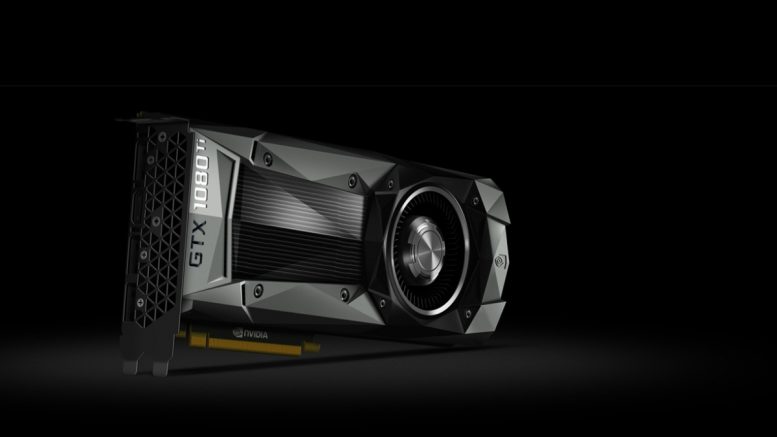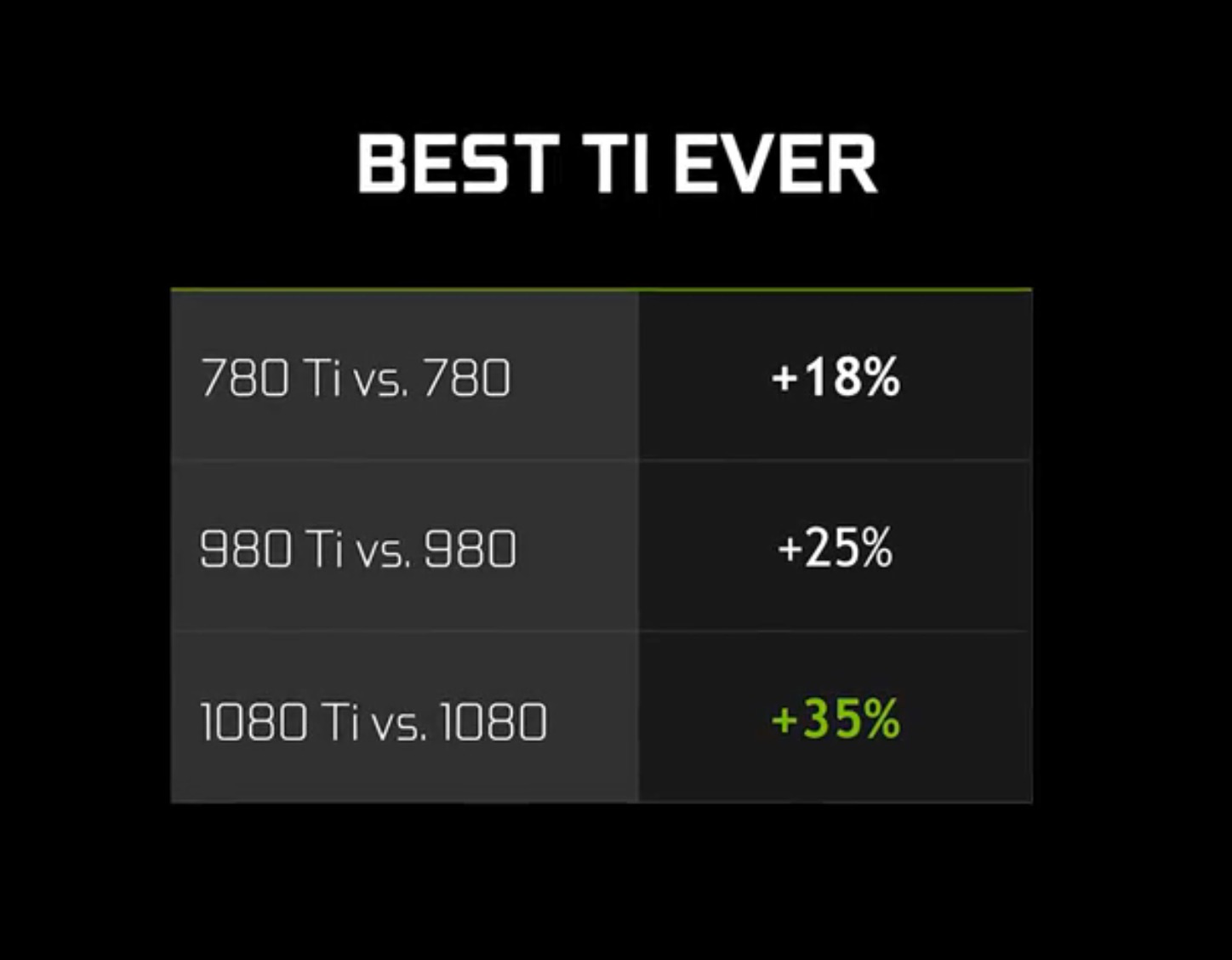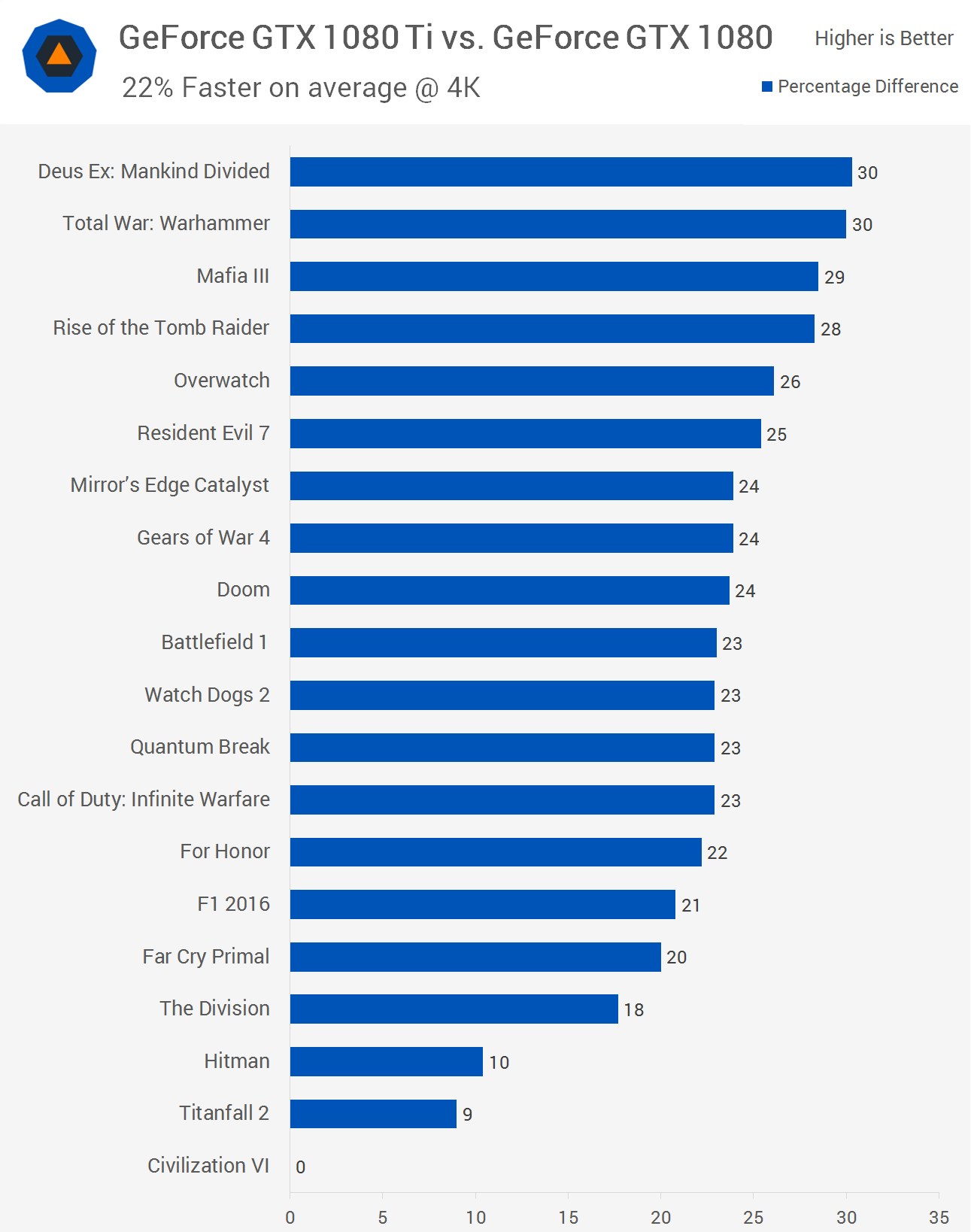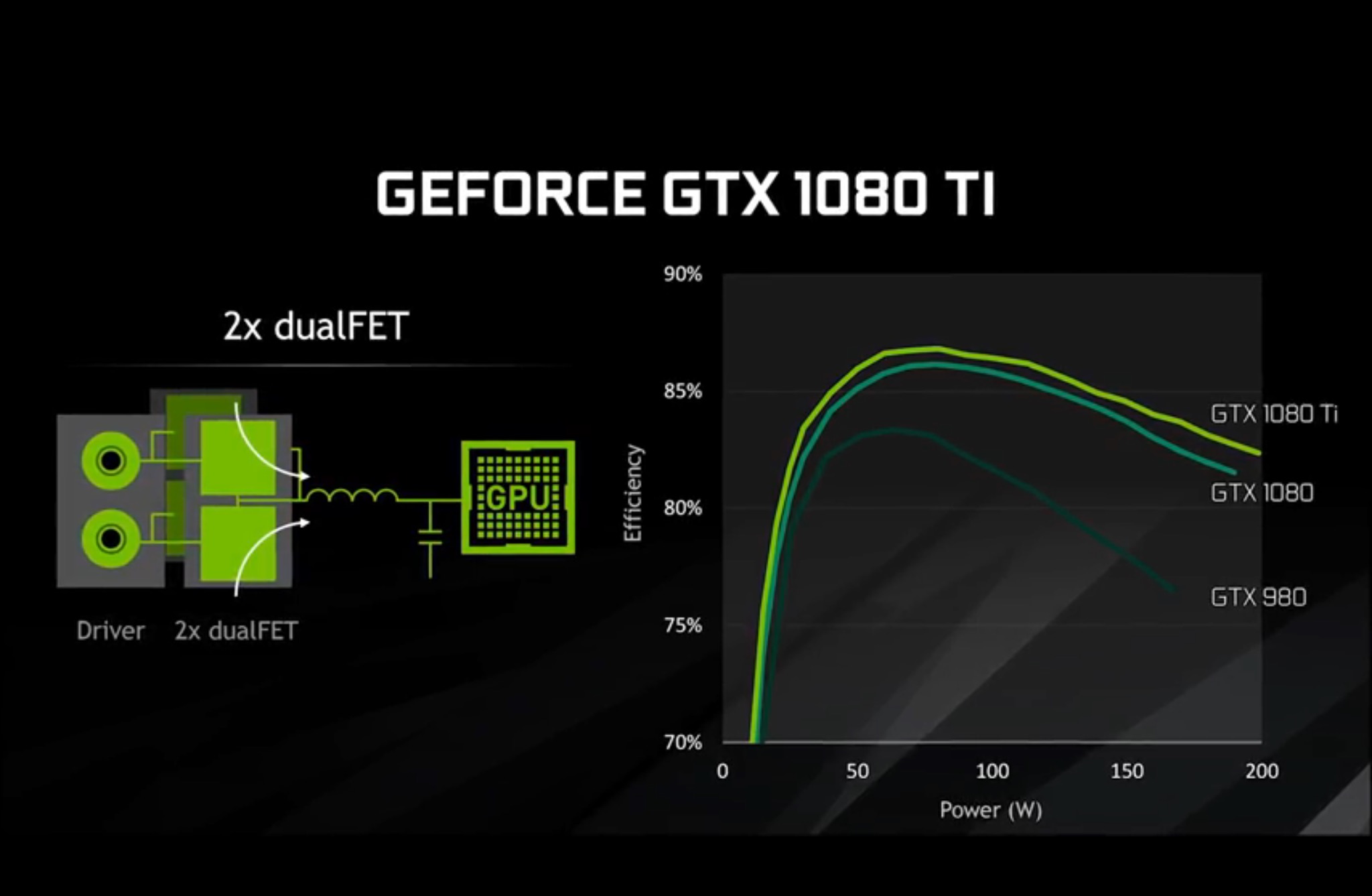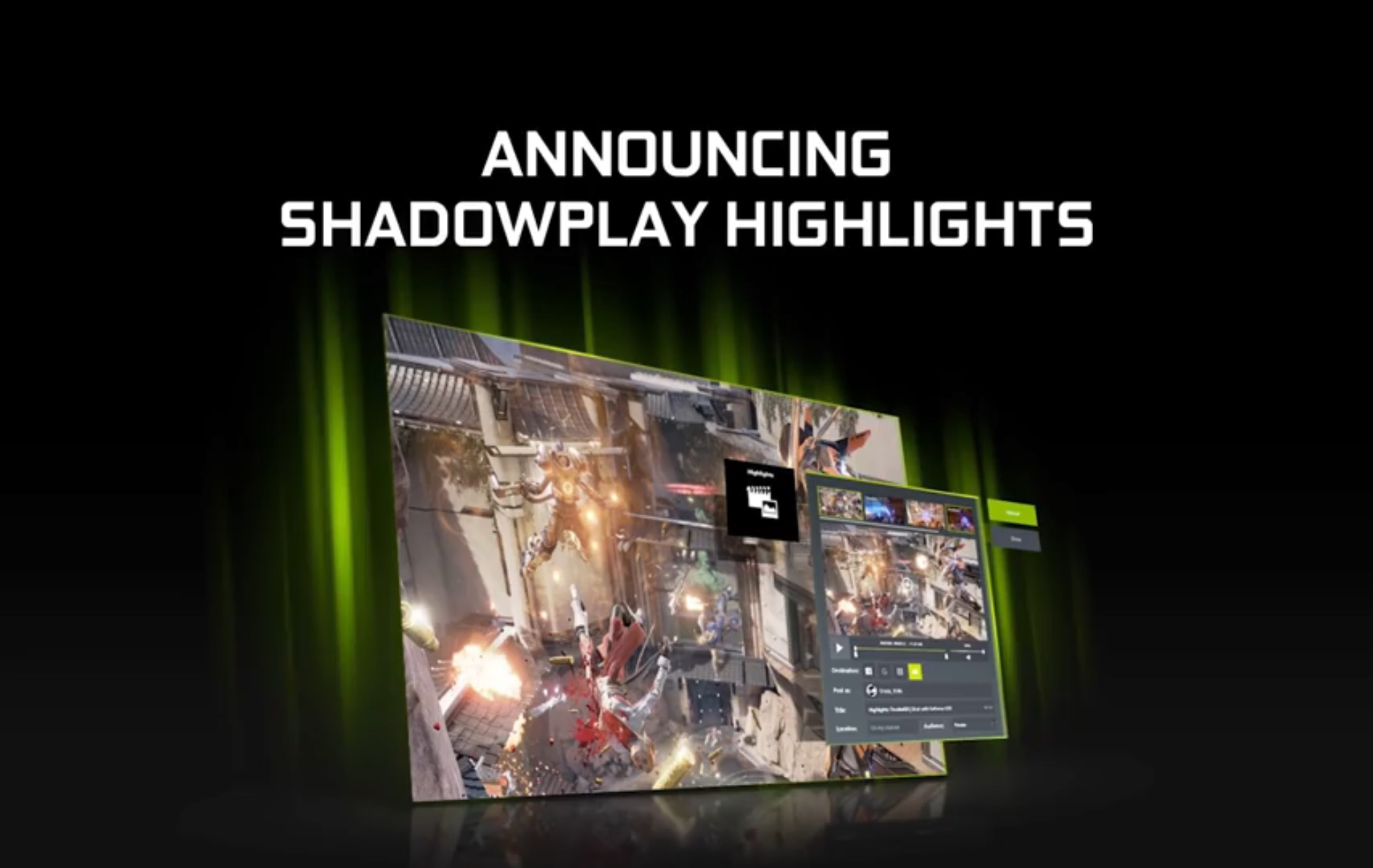On February 28, 2017, the company Nvidia released its new flagship graphics card1, the GTX 1080 Ti, which gives a 35% performance improvement compared to Nvidia’s GTX 1080 graphics card. The GTX 1080 Ti also has just edged out Nvidia’s former most powerful GPU, the Titan XP, by a few Megahertz2 in processing power. The 1080 Ti also has two power connectors compared to the GTX 1080’s one, which means more power, which equals better performance. The 1080 Ti is the largest improvement in performance compared to any regular vs. Ti.
Here are some comparisons between the 1080 and the 1080 Ti in various games. The numbers on the right show the performance gain between the 1080 and 1080 Ti. These test were run at 4K4 resolution.
The GTX 1080 Ti also has the same amount of CUDA cores as the Titan XP coming in at 3584 cuda cores. To quote GamersNexus, “The cores are responsible for processing all the data that is fed into and out of the GPU, performing game graphics calculations that are resolved visually to the end-user.” The 1080 Ti does have the same Thermal Design Power (TDP) has the Titan XP with 251 watts. TDP means the maximum amount of energy (watts) in the form of heat. The 1080 Ti uses 2x dualFET system for power which will make the graphics card more power efficient.
There was also a change to the io3. The GTX 1080 Ti has 3 display ports and one HDMI and Nvidia has decided to leave out a DVI port, but Nvidia has included a HDMI to DVI adapter in the box. HDMI and DVI are different ways to connect your graphics card to your display (i.e. HDMI to TV, HDMI to Monitor, etc.). The 1080 Ti has 11 Gigabytes (GB) of GDDR5X memory, running at 11 gbps (gigabits per second), this memory helps load games. The 1080 Ti also has a new cooling system which promises better cooling than the Titan XP. The cooling system uses vapor chambers for better cooling and less sound. Nvidia also improved their shadow play system. You can now create highlights using shadow play. The shadow play system is used mainly for recording and focused towards YouTube creators and Twitch streamers.
There will be multiple sellers of the 1080 Ti with each card having its own benefits and drawbacks, like price, aesthetics, cooling, performance etc.
Nvidia
Nvidia will be the first company to sell the 1080 Ti. Nvidia created the graphics card so it will be named the GTX 1080 Ti Founders edition. The founder’s edition models will cost $699.
Asus
Asus has multiple versions of the 1080 Ti coming out. GTX 1080 TI Strix Gaming and the Gaming OC will come with the manufacturer’s triple fan DirectCU III cooler plus a backplate. The Asus GTX 1080 GTX Turbo comes with what appears to be a standard cooler, and will most likely have similar specs to the Founders Edition.
Zotac
Zotac has announced the GeForce GTX 1080 Ti Prime Gamer Force (PGF) Edition. Zotac’s card uses a triple fan cooler, on the top of the card there are two, 8-pin power connectors. Zotac, also, has a Founders Edition coming too.
MSI
MSI will also has its own Founders Edition on the way, but MSI also has the GeForce GTX 1080 Ti Gaming X coming. The MSI edition of the card will have a dual fan Twin Frozr VI cooler, which is MSI’s main cooling system for GPU’s and RGB (Red, Green, Blue) LEDs if you’re looking to make the inside of your computer RAINBOW!
EVGA
Expect a Founders Edition card to be sold by EVGA, along with some custom cards. Now the manufacturer has announced the GTX 1080 Ti FTW3 which utilizes a custom iCX Cooling Solution. The system is a large three 100mm (millimeter) fan design, and there are lots of sensors to keep a check on internal temperatures.
Inno3D
Inno3D shuns the idea of three fans. Inno3D’s GTX 1080 Ti will come with the iChiLL X4 quad fan cooling solution, with three large fans on the front, and a smaller fan on top of the graphics card.
Thanks for reading my GTX 1080 Ti review. Sorry for being very late on writing, it was hard to gather the data. If you have any feedback I on my article please comment on this article. There are some definitions at the bottom. Thanks for reading!
DEFINITIONS
- Graphics card: a printed circuit board that controls the output to a display screen. Also has a processor dedicated to graphics
- Megahertz: one million hertz, used as a measure of the frequency of radio transmissions or the clock speed of a computer processor or graphics card.
- Io: the io on a graphics card is how the graphics card is able to output to a display (I.e TV, Monitor). The most common way to connect a graphics card to a display is HDMI or DVI cables.
- 4K: the pixel density of a monitor, TV, photo etc. The higher pixel density the more crisp and clean the image looks.

